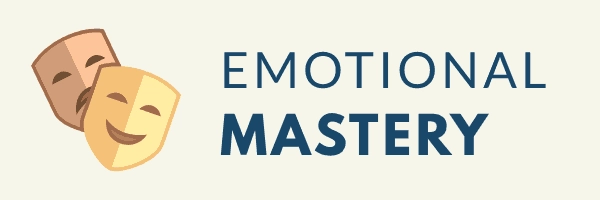
+
But I will save you the trouble and skip the fancy steps. Here is everything you need to know about how to practice mindfulness meditation:
- Choose a position: standing, walking, slowly moving your body (aka tai chi) sitting straight or lying down. Anything will work – even mundane tasks like cleaning.
- Now all you have to do is be aware. You can be aware of your breath, feelings, and thoughts or sounds, smell, and sight around you.
Over the next 6 days, choose a time (morning, after work, before bed, etc.) and practice mindfulness meditation.
Feel free to switch up the practice by changing your position, closing/opening your eyes or by choosing what to be aware of.
Make sure to slow down. Don’t worry about doing it the “right” way or doing it for a lot of minutes. Even 1 minute counts as a successful meditation session.
Lastly, when you choose to be aware of your thoughts or feelings, give yourself two roles – thinking and observing mind. The job of the thinking mind is to think so let it. The job of the observing mind is to just observe. That’s what you will use during the meditation.[/text_block][/op_liveeditor_element]

Day 1
[/text_block]
+
For the next 24 hours, track your emotions and how you react to them.
You don’t have to track every second. But every time you feel a strong or noticeable emotion, name the emotion and the situation.
Examples of situations:
- After waking up
- Meeting someone
- Doing or saying something
- Working on daily activities
- Listening to something
- Coming home
- After arriving home
- Seeing family
As much as you can, name the specific emotion using the following PDF: https://designepiclife.com/list-of-feelings/
For example: if you feel sad, look over the PDF and see different emotions under the “sad” category. After that, choose one word (example: hopeless).
Bonus: You may also invent new names for the things you feel in particular.
(Optional) Further reading: A Full List Of Emotions To Instantly Raise Your Emotional Awareness (A-Z)[/text_block][/op_liveeditor_element]

+
Now, write down these five things happened in that situation:
- Cognitive appraisal: an evaluation of events and objects
- Bodily symptoms: the physiological component of emotional experience
- Action tendencies: a motivational component for the preparation and direction of motor responses.
- Expression: facial and vocal expression, body language, gestures, almost always accompanies an emotional state
- Feelings: the subjective experience of emotional state once it has occurred
An example: “Yesterday, a colleague passed a comment about my weight. I felt very angry and I tried to hide my emotions in front of everyone. I wanted to get back to him immediately. Instead, I left the conversation and kept thinking about the scenario for the entire day.”
Source:
Scherer, K. R. (2005). “What are emotions? And how can they be measured?”. Social Science Information 44: 693–727[/text_block][/op_liveeditor_element]

Day 2
[/text_block]
+
Did you notice any patterns? How do you currently cope with most uncomfortable emotions you feel?
Some other key questions to ask yourself:
- What went through my mind at that time?
- How am I seeing things now?
- What is it about this that matters to me?
- What does this event or situation mean to me? Or what does it mean about me?
To help you with the source and patterns, here are some of common types of thoughts that trigger negative emotions:
Sadness
- Self-critical thoughts
- Pessimistic thoughts
- Thoughts of loss or failure
Anxiety
- Thoughts of something bad that could happen in the future
- Thoughts of threat, risk or danger
- What-if thoughts
Anger
- “should” thoughts
- Thoughts of having been harmed, having been treated unfairly
- Thoughts of rules being broken
Guilt
- Thoughts of having harmed someone
- Thoughts of having done something that goes against your own morals
- Sense of responsibility for a negative outcome
Shame
- Thoughts that other will judge flaws or mistakes in a negative way

+
- Write down the things that intimidate you. For each item, keep asking yourself “what is it about _ that intimates you” until you finally get to the roots. Make sure you note it down.
- Write down your limiting beliefs around any area you want (career, passion, health, finance, family, relationships, …). By limiting beliefs, I mean any belief that holds you back or makes you doubtful.
The goal is just to get these thoughts on paper so you’re aware of them. There’s no action necessary for now (we’ll tackle them in Self-Management module).[/text_block][/op_liveeditor_element]

Day 3
[/text_block]
+
But first, I want you to watch one or both of these videos:
- Video 1 (3 minutes long) – watch if you’re short on time.
- Video 2 (20 minutes long) – watch if you have time to dig deeper.
Now write down a brief review of your life story. Consider how you have been shaped by your family life, education, cultural heritage, major successes and failures, traumatic events, and your hopes and aspirations.
You could write about any relationship such as the relationship with your family, friends or partners relationship with negative emotions or events, relationship with successes and failures, relationship with money, relationship with work, relationship with food, relationship with self, etc.
Here are a few questions you can use to start:
- What were your parents or guardians like?
- What were their values?
- What did they teach you about the world?
- What did you learn from them about things like taking risks vs. being safe, what’s possible in life and what isn’t, what you’re capable of and what you’re not?
- What about your wider environment, like school, extended family, local community, and/or religious institutions? What did they teach you about yourself?
- What did you learn about your identity (nationality, gender, ethnicity, economic status, physical appearance, etc.) and how did that affect your sense of possibility? Were you ever told things like “Girls don’t do X” or “People like us can never do Y”?
- Did you feel confident or lacking in confidence? Or did you feel confident in some areas, but not others? Which ones?
- As you grew older, which of these early lessons did you react most strongly against? What did you learn about yourself that contradicted what you’d been taught?
- What major or minor events shaped who you are today?
(Optional) Further reading: What old story about yourself are you still believing? Here’s how to find it and change it
(Optional) Further reading: The two kinds of stories we tell about ourselves[/text_block][/op_liveeditor_element]

+
A study showed that individuals with higher levels of peace of mind reported more positive dream emotions, whereas those with higher levels of anxiety reported more negative dream emotions.
Start paying attention to your dreams and take them as feedback. If you get negative feedback from your dreams, you know you need to resolve an internal issue you may have been neglecting. (we will learn more about self-management in the next week)[/text_block][/op_liveeditor_element]

Day 4
[/text_block]
+
While there are a lot of quizzes which claim to know your personality, there’s only one that is actually based on research. It’s called the Big 5 personality traits. The traits are extraversion, agreeableness, openness, conscientiousness, and neuroticism. You’ve probably heard of it already.
While I don’t believe personality stays the same throughout the lifetime, it’s always good to know more about yourself based on a qualified personality quiz.
Today, let’s explore your current personality traits. So take one of these quizzes and record the results:
[/text_block][/op_liveeditor_element]
+
For this exercise, choose one or more people who know you well (co-workers, family members or friends).
The goal is to find your blind spots according to the Johari Window model.
So here’s what you’ll do:
- Give this list of character traits to the people you chose (either send them the link, print the PDF or give them the list of traits): http://www.xplaner.com/wp-content/uploads/2016/01/List-of-character-traits-1.pdf
- Ask them to put a check on the traits that they think apply to you. You also put a check on the traits you think you have on a separate sheet.
- Now compare the results to make a chart like this and fill in the traits.
Optional: You can also ask them questions like: “What do I do well?” and “What do you think I should improve?”. Remember to learn to take feedback well. They are helping you, be grateful for their honesty instead of feeling upset or taking it personally.
Optional: You can also take the VIA strengths quiz by going to this link and choosing “VIA Survey of Character Strengths” under “Questionnaires” menu. (Note: you’ll have to make an account on the website to take the quiz)[/text_block][/op_liveeditor_element]

Day 5
[/text_block]
+
Some prompt to explore your values:
- What’s important to you?
- What pisses you off?
- What are your non-negotiables?
- What are you proud of? Why?
- What do you admire about the people you admire?
- How (and why) do you want others to see you?
Now follow the instructions in the following PDF to narrow down the list to your 5 core values: https://www.cmu.edu/career/documents/my-career-path-activities/values-exercise.pdf[/text_block][/op_liveeditor_element]

+
Let me tell you a little secret. The secret to confidence is to know your values and then living up to them. As soon as you betray yourself, you will feel hollow and depressed. But if you live with integrity and congruence, life becomes much easier to navigate.
So think about how you can align your core values with the way you live. Are you fully living up to your values? List all the areas of life in which you’re not fully living up to your values. Now, make a list of actions you’d take to align them to your values.
(Optional) Further reading: How To Find Yourself And Build Limitless Confidence In Yourself[/text_block][/op_liveeditor_element]

Day 6
[/text_block]
+
We put on these masks to please others or fit in. If we are not careful, these masks can turn us into an inauthentic person.
Write the masks you’ve put on. Since when did you learn to put them? What are you hiding behind these masks? Are they issues from the past, insecurities, mistakes, failures, fears or secrets?
Instead of putting on these fake masks, think how you can be a genuine person with genuine traits so you can find genuine people (who accept your true self) to form genuine relationships. ;)[/text_block][/op_liveeditor_element]

+
- Draw a square and divide it into 4 sections (you may also just create 4 lists if you’re using a digital notebook)
- The square represents your home – your true essence. The four parts represent the rooms in your home.
- Today, we’ll only fill two of these lists as explained below. (we’ll cover the other two in the ‘Motivation’ module)
Room/List 1: Write what makes you happy and what makes you feel like your true self.
Room/List 2: Write your core values you selected in Mission 9.
Room/List 3: (Leave empty for now)
Room/List 4: (Leave empty for now)
Now, here’s a bonus room. On either of the sides, draw another room outside your home. We’ll call it the trash room.
Trash Room/List: Write the things you want to avoid in life and what doesn’t feel like yourself.
Keep this paper/file saved. We’ll come back to it in the “Motivation” module.[/text_block][/op_liveeditor_element]

+
This is a clear statement of who you choose to be so you are clear and confident about yourself.
After writing this statement… say to yourself – “I accept myself”.[/text_block][/op_liveeditor_element]


